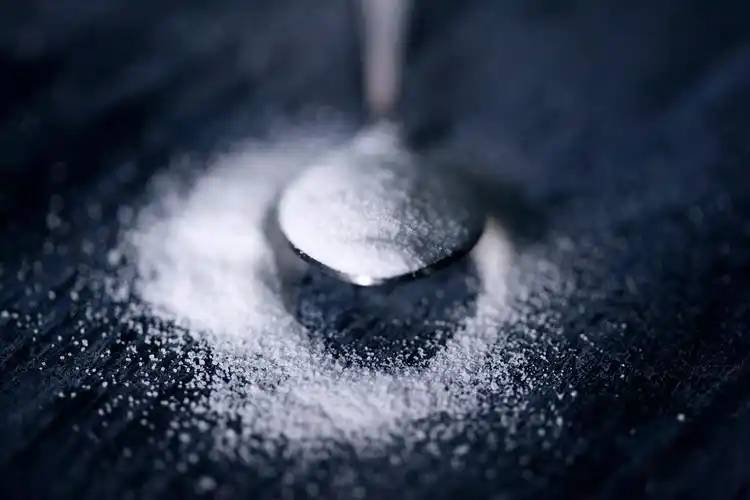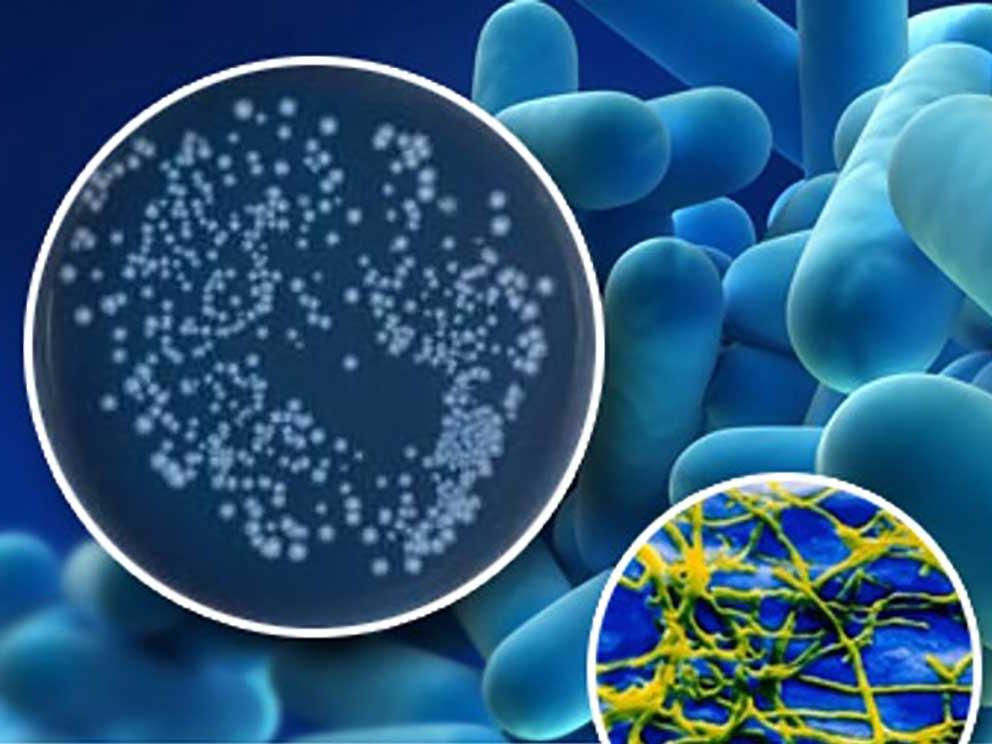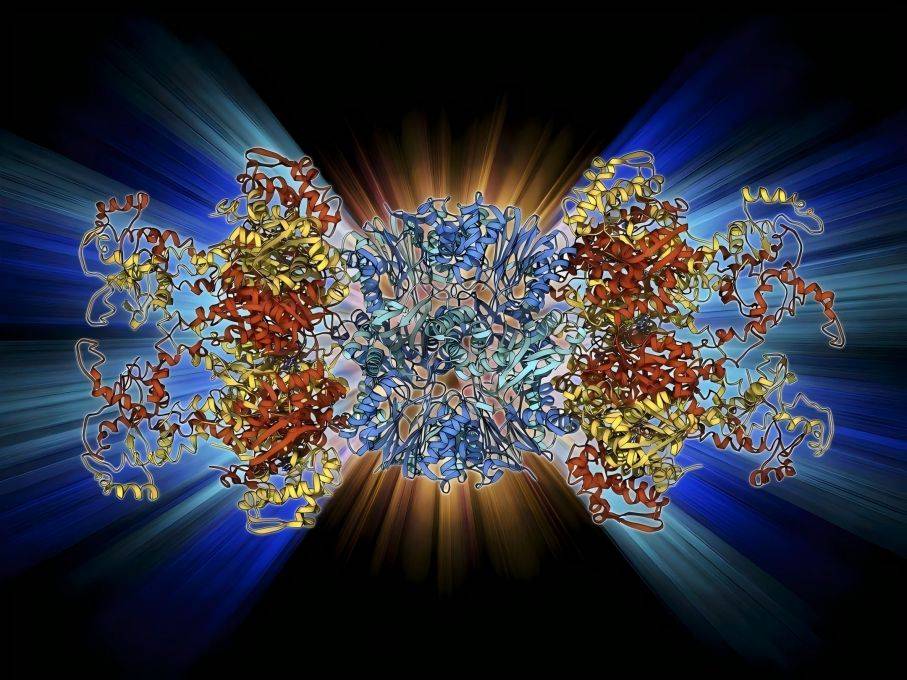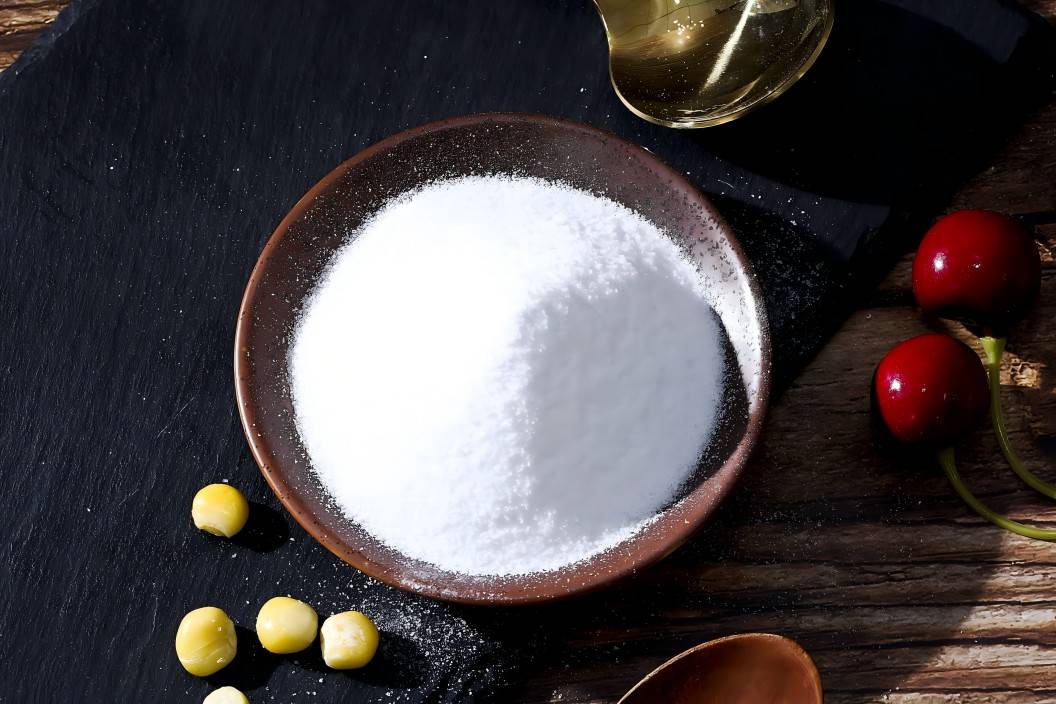What Are the Uses of Sweetener D Allulose Powder?
In recent years, with the gradual improvement of people's living standards, the excessive intake of high-sugar, high-fat foods has led to the widespread prevalence of diseases such as diabetes and hypertension around the world [1]. Therefore, finding suitable low-calorie food supplements has become crucial, and rare sugars with multiple effects have gradually come into people's view.
Rare sugars are monosaccharides and their derivatives that are rarely found in nature and can improve the dietary health of specific populations. More and more research results have shown that rare sugars play an important role in human health. For example, D-allose has the property of inhibiting cancer and tumors [2]; D-tagatose can have a positive effect on dental health by inhibiting the formation of biofilms by pathogenic bacteria such as actinomycetes [3]. Among rare sugars, D-allulose (D-psi-cose) has attracted much attention as an ideal substitute for sucrose due to its unique taste and physiological functions. This article aims to introduce the physiological functions of D-allulose and its main applications, laying the foundation for further research on D-allulose.
1 D-allulose
1.1 Physical and chemical properties of D-allulose
D-Allulose is a rare sugar with almost zero calories, and is mainly derived from wheat and sugar cane. The structural formulae of D-allulose and D-fructose are shown in Figure 1 [4], and the two are isomers of each other. D-Allulose is 70% as sweet as sucrose, and is a functional sugar with a variety of health benefits [5]. It is a white powdery crystalline compound. In 2011, the US Food and Drug Administration (FDA) determined that it was generally regarded as safe (GRAS) [6], which laid the foundation for D-allulose to be used as a food ingredient. The physical and chemical properties of D-allulose are shown in Table 1 [7].
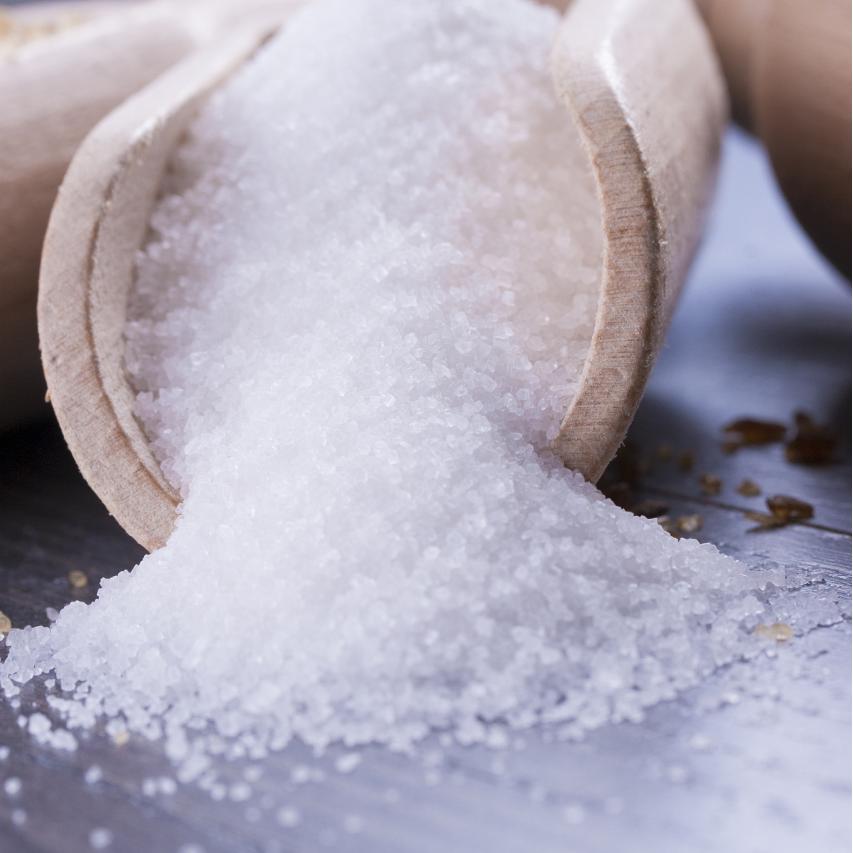
1.2 Synthesis methods for D-allulose
To date, researchers have been able to prepare D-allulose using two methods: chemical synthesis and bioconversion.
1.2.1 Chemical synthesis
In the chemical synthesis method, glucose is used as the raw material, and molybdate is used as the catalyst to obtain crude D-allulose through high-temperature catalysis. The crude product is then crystallized by cooling with an organic solvent to obtain pure D-allulose [8]. However, the chemical synthesis method is not the main method for industrial preparation of D-allulose because of the complex purification of intermediate products and serious environmental pollution.
1.2.2 Bioconversion method
Bioconversion refers to the use of biological enzymes to catalyze the production of target products from substrates. D-Fructose can be converted to D-allulose under the catalysis of D-psicose 3-epimerase (DPEase) [9]. In 1990, Izumori et al. [10] discovered a strain of bacteria, Alcaligenes sp. 701B, that could convert D-talitol to D allo-gulonic acid. This was the first report of the biotransformation of D-allo-gulonic acid. Zhang Longtao et al. [11] screened a strain of Rhodobacter sphaeroides (SK011) that can convert D-fructose to D-allulose, with a yield of 6.54%. This is the first report in China of a strain with the function of converting D-fructose to D-allulose. In addition to Rhodobacter sphaeroides and Agrobacterium tumefaciens, other strains such as Clostridium cellulolyticum [12], Clostridium bolteae [13], Ruminococcus sp. [14], Clostridium sp. [15] and so on have also been reported to have DPEase activity .
Although DPEase in microorganisms can be used to convert D-allulose, the secretion and activity of DPEase in natural microorganisms is much lower than expected, and it cannot be used in large-scale industrial production. Therefore, the construction of engineered strains is of great significance for the study of DPEase characteristics and industrial applications. At present, DPEase genes from different sources have been cloned and expressed in expression systems such as Escherichia coli [16], yeast [17] and Bacillus subtilis [18]. Biotransformation has gradually replaced chemical synthesis as the main method for synthesizing D-allulose at home and abroad because of the specificity of the reaction, the simplicity of product purification and the lack of contamination.
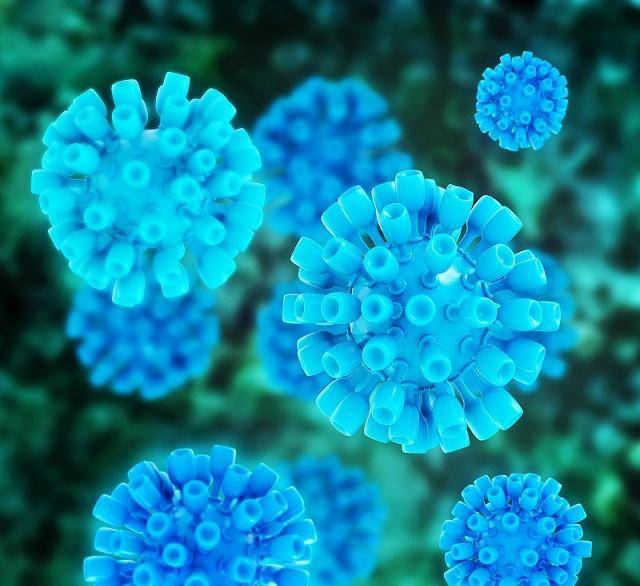
2 Main physiological functions of D-allulose
2.1 Hypoglycemic function
Diabetes is a general term for heterogeneous metabolic disorders, characterized by elevated blood glucose [19]. Studies have found that long-term administration of D-allulose can induce the transfer of glucokinase from the nucleus to the cytoplasm of liver cells, maintain glucose tolerance and insulin sensitivity in rats, and thus maintain blood glucose levels [20]. D-Allulose can also promote the release of glucagon-like peptide-1 (GLP-1) in experimental mice, activate the afferent vagal nerve signal, reduce food intake and increase the mice's glucose tolerance [21]. In addition, when D-allulose-fed rats were kept for up to 60 weeks, it was found that the inflammatory marker glycated hemoglobin in the rats was significantly reduced [22], which also indicates that D-allulose can prevent the development of type 2 diabetes by controlling postprandial hyperglycemia.
Combined with other literature reports, the hypoglycemic effect of D-allulose is mainly manifested in reducing the activity of liver lipogenic enzymes [23] and increasing the activity of lipase oxidase [24]. This shows that the hypoglycemic effect of D-allulose can make it a new type of hypoglycemic drug that can be widely used.
2.2 Fat-reducing function
By studying the anti-obesity effect of D-allulose on adult rats fed a high-sucrose diet, it was found that 5% D-allulose could not control fasting blood glucose levels, but significantly inhibited the accumulation of abdominal fat and the increase in body weight in rats [25]. Compared with the control group fed the same dose of sucrose, D-allulose supplementation can significantly reduce body weight gain and abdominal fat in rats without side effects [26]. In addition, supplementing the diet of leptin-deficient mice with D-allulose significantly reduced body weight and liver weight. According to liver histology, D-allulose also improved liver steatosis, suggesting that D-allulose may have a beneficial effect on obesity-related diseases [27].
The mechanism by which D-allulose participates in lipid metabolism is not yet clear. Moon et al. [28] speculate that D-allulose can inhibit pre-adipocyte differentiation and lipid accumulation by regulating adipogenic transcription factors. The discovery of D-allulose's fat-reducing function indicates its potential application in the development of functional weight loss products.
2.3 Anti-atherosclerotic function
Studies have found that high density liptein cholesterol (HDL-C) is directly related to the risk of atherosclerosis. D-allulose can enhance the uptake of HDL-C by the liver by increasing the expression of scavenger receptor class B type I, thereby reducing HDL-C levels and preventing the development of atherosclerosis [29]. A study of the effect of D-allulose on monocyte chemoattractant protein-1 (MCP-1) in human umbilical vein endothelial cells found that D-allulose can achieve an anti-atherosclerotic effect by inhibiting the expression of MCP-1 [30]. The discovery of D-allulose's anti-atherosclerotic function provides a choice for subsequent drug research on atherosclerotic diseases research.
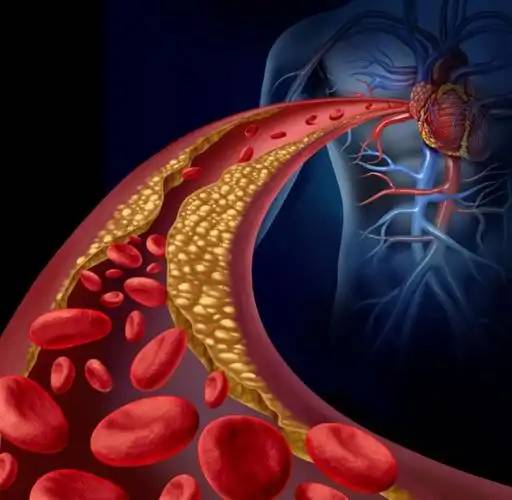
2.4 Antioxidant function
Some studies have shown that D-allulose has stronger reactive oxygen species (ROS) scavenging activity than other rare sugars [31]. Studies have found that D-allulose at concentrations of 2% and 4% can remove reactive oxygen species (ROS) produced by mice after oral administration of di(2-ethylhexyl) phthalate, and inhibit the production of ROS and malondialdehyde (MDA) in the testes of male Sprague-Dawley rats, thereby preventing testicular damage [32]. Due to its good antioxidant properties, D-allulose is widely used in health products, cosmetics and other fields.
2.5 Neuroprotective function
D-Allulose can slow apoptosis induced by 6-hydroxydopamine (6-OHDA). Studies have found that a certain concentration of D-allulose can significantly slow down the apoptosis of chromaffin cell tumors in rats. When cells are co-cultured with D-allulose and 6-OHDA for 24 hours, the intracellular glutathione content increases significantly, indicating that D-allulose can play an important role in neurodegenerative diseases of the central nervous system by regulating the concentration of intracellular glutathione [3 3]. This indicates that D-allulose has potential for the treatment of degenerative diseases of the nervous system and provides support for the subsequent development of related drugs.
2.6 Anti-inflammatory function
D-allulose can also interact with certain intestinal microorganisms to reduce inflammation by downregulating the expression of genes in multiple tissues and increasing the composition of Lactobacillus and Enterococcus in the intestinal microbiota[34]. In rats with spontaneous type II diabetes, D-allulose supplementation, with or without drinking water containing 3% D-allulose, for 13 weeks significantly slowed the increase in blood glucose levels and the progressive mesangial expansion of the glomerulus [35]. D-allulose can therefore be used as an anti-inflammatory agent, and has potential medical value in the prevention and treatment of various diseases.
In summary, a large number of animal model experiments have shown that D-allulose has a significant effect on reducing postprandial blood glucose and controlling body weight, but there have been fewer studies on its anti-inflammatory and neuroprotective functions.
3 Main applications of D-allulose
At present, research on the application of D-allulose is mainly focused on the food and medical fields.
3.1 Food
D-allulose is more popular than sucrose because of its special functions and health benefits. For example, D-allulose can improve the water retention capacity of foods. Taking D-allulose-added soy gels can slow down gastric emptying and thus prolong the feeling of fullness [36]. Adding D-allulose to cereal flour-based baked goods can keep them soft and moist, and give them a good melt-in-the-mouth feel [37]. At the same time, D-allulose can react with proteins in food to produce a Maillard reaction and produce a pleasant flavor [38].
In the field of functional foods, D-allulose can give foods or drinks prebiotic properties. D-allulose can also be combined with other prebiotics or probiotics to enhance their antioxidant effects. D-allulose was synthesized biochemically from D-glucose and D-fructose in red date juice concentrate, and a functional red date juice containing D-allulose was developed [39].
The biggest advantage of D-allulose in the food industry is that it is very similar to sucrose in terms of properties and functions, while also having many physiological functions that sucrose does not have, making it the best sugar substitute when compared to other sweeteners. With people becoming more health conscious and food safety issues becoming increasingly prominent, D-allulose, as a new type of sweetener, will definitely play a huge role in the food industry.

3.2 Medical field
Studies have found that D-allulose and metronidazole have certain interactions, which can significantly enhance the drug effect of metronidazole. Using D-allulose together with metronidazole can reduce the drug dosage and prevent the development of drug resistance in trichomonads [40]. D-allulose can also be used as a potential anthelmintic, which can specifically inhibit the motility , growth and reproductive maturity, and interferes with the metabolic expression of nematodes [41]. Oral and intravenous administration of D-allulose to Wistar rats was found to result in rapid transfer to the blood or urine, indicating that D-allulose is well absorbed by rats, eliminated rapidly after administration, and has a short duration of action, providing valuable pharmacokinetic data for further drug development of D-allulose [42]. In addition, rare sugars (including D-allulose) were tested in vitro using cell lines to determine their effect on cell proliferation. It was found that D-allulose can inhibit cancer cell proliferation, suggesting that D-allulose may become an adjuvant anti-cancer drug in the future [43].
At present, there is still relatively little research on D-allulose in the medical field, and most of it is based on in vitro or animal experiments. More clinical experiments are still needed to study its physiological functions and possible toxic effects.
3.3 Other fields
In addition to its use in the food and medical fields, D-allulose can also be used as a material for making waterproof, light-transmitting films [44] to improve the environmental friendliness of products. In addition, D-allulose can also be used as a precursor to synthesize D-allose and D-tagatose [45]. In addition, because D-allulose has the function of lowering blood sugar, it can also be used as a unique metabolic regulator of fat and glucose metabolism [46] to improve carbohydrate metabolism. With the popularity of D-allulose, it will also be used in various new products.
4 Conclusion
D-Allulose is a recognized fourth-generation natural sweetener that is an ideal substitute for sucrose and is currently one of the most popular sweeteners in the world. At present, the bioconversion technology for the production of D-allulose has been widely studied, including the source, modification, preparation and conversion of the required enzymes. Products produced using D-allulose as a raw material also include beverages, baked goods, dairy products, etc. Research on D-allulose in China started relatively late, and although the physiological functions and related applications are not satisfactory, the upstream gene mining and engineered cell construction have developed rapidly. Nowadays, with the development of global diseases such as diabetes and obesity, and in-depth research on the physiological functions and applications of D-allulose, D-allulose is bound to have a broader market value.
Reference
[1] VAN LAAR A D E, GROOTAERT C, VAN CAMP J. Rare mono - and disaccharides as healthy alternative for traditional sugars and sweeteners? [J]. Critical Reviews in Food Science and Nutrition, 2021, 61(5): 713-741.
[2] CHEN Z W, CHEN J J, ZHANG W L, et al. Recent research on the physiological functions, applications, and biotechnological produc - tion of d-allose[J]. Applied Microbiology and Biotechnology, 2018, 102(10): 4269-4278.
[3] MIJAILOVIC N, NESLER A, PERAZZOLLI M, et al. Rare sugars: Recent advances and their potential role in sustainable crop protec - tion[J]. Molecules, 2021, 26(6): 1720.
[4] XIE Laichao. Physicochemical properties and research progress of D-allulose[J]. Beverage Industry, 2022, 25(6):71-77.
[5] LEE D, HAN Y, KWON E Y,et al. D-allulose ameliorates metabolic dysfunction in C57BL/KsJ-db/db mice[J]. Molecules, 2020, 25(16): 3656.
[6] GUO Q, ZHENG L J, LUO X, et al. Engineering Escherichia coli for d-allulose production from d-fructose by fermentation[J]. Journal of Agricultural and Food Chemistry, 2021, 69(45): 13578-13585.
[7] XIA Y, CHENG Q Q, MU W M, et al. Research advances of d-allu - lose: An overview of physiological functions, enzymatic biotransfor - mation technologies, and production processes [J] . Foods (Basel, Switzerland), 2021, 10(9): 2186.
[8] HUANG Qingyu, XU Zheng, XIONG Qiang, et al. Progress in re - search and development of calorie-free sweetener D-allulose pro - duction[J]. Industrial Microbiology, 2020, 50(3): 57-63.
[9] HU M Y, LI M L, JIANG B, et al. Bioproduction of D -allulose: Properties, applications, purification, and future perspectives [J]. Comprehensive Reviews in Food Science and Food Safety, 2021, 20(6): 6012-6026.
[10] IZUMORI K, YAMAKITA M, TSUMURA T, et al. Production of d- psicose from d-talitol, d-tagatose or d-galactitol by Alcaligenes sp. 701B[J]. Journal of Fermentation and Bioengineering, 1990, 70(1): 26-29.
[11] ZHANG Longtao, MU Wanmeng, JIANG Bo, et al. Screening of Rhodobacter sphaeroides for bioproduction of D-psicose[J]. Food and Fermentation Industries, 2008, 34(9): 40-43.
[12] CHU Feifei, XING Qingchao, MU Wanmeng, et al. Cloning, expres - sion and characterization of Clostridium cellulolyticum D -tagatose 3-epimerase[J]. Journal of Food Science and Biotechnology, 2011, 30(2): 283-286.
[13] JIA M, MU W M, CHU F F, et al. A d-psicose 3 -epimerase with neutral pH optimum from Clostridium bolteae for d -psicose pro- duction: Cloning, expression, purification, and characterization [J]. Applied Microbiology and Biotechnology, 2014, 98(2): 717-725.
[14] ZHU Y M, MEN Y, BAI W, et al. Overexpression of d-psicose 3 - epimerase from Ruminococcus sp. in Escherichia coli and its poten- tial application in d-psicose production[J] . Biotechnology Letters, 2012, 34(10): 1901-1906.
[15] MU W M, ZHANG W L, FANG D, et al. Characterization of a d-psi - cose-producing enzyme, d-psicose 3 -epimerase, from Clostridium sp[J]. Biotechnology Letters, 2013, 35(9): 1481-1486.
[16] JIANG Yanjun, ZHANG Lihua, LI Nan, et al. Synthesis of D-allu - lose and coupling to Saccharomyces cerevisiae fermentation[J]. Chi- na Brewing, 2021, 40(7): 136-140.
[17] JUNEJA A, ZHANG G C,JIN Y S, et al. Bioprocessing and technoe - conomic feasibility analysis of simultaneous production of d-psicose and ethanol using engineered yeaststrain KAM-2GD[J]. Bioresource Technology, 2019, 275: 27-34.
[18] PATEL S N, KAUSHAL G, SINGH S P. D-Allulose 3-epimerase of Bacillus sp. origin manifests profuse heat-stability and noteworthy potential of D-fructose epimerization[J] . Microbial Cell Factories, 2021, 20(1): 60.
[19] HARREITER J, RODEN M. Diabetes mellitus-Definition, classifi - cation, diagnosis, screening and prevention (Update 2019)[J]. Wiener Klinische Wochenschrift, 2019, 131(Suppl 1): 6-15.
[20] HOSSAIN M A, KITAGAKI S, NAKANO D, et al. Rare sugar D-psi - cose improves insulin sensitivity and glucose tolerance in type 2 di - abetes Otsuka Long-Evans Tokushima Fatty (OLETF) rats [J]. Bio - chemical and Biophysical Research Communications, 2011, 405(1): 7-12.
[21] IWASAKI Y, SENDO M, DEZAKI K, et al. GLP-1 release and vagal afferent activation mediate the beneficial metabolic and chronothera - peutic effects of D-allulose[J]. Nature Communications, 2018, 9(1): 113.
[22] HOSSAIN A, YAMAGUCHI F, HIROSE K, et al. Rare sugar D-psi - cose prevents progression and development of diabetes in T2DM model Otsuka Long-Evans Tokushima Fatty rats[J]. Drug Design, De - velopment and Therapy, 2015, 9: 525-535.
[23] NAGATA Y, KANASAKI A, TAMARU S, et al. D -psicose, an epimer of D-fructose, favorably alters lipid metabolism in Sprague- Dawley rats[J]. Journal of Agricultural and Food Chemistry, 2015, 63(12): 3168-3176.
[24] OCHIAI M, ONISHI K, YAMADA T, et al. D-Psicose increases en - ergy expenditure and decreases body fat accumulation in rats fed a high-sucrose diet [J] . International Journal of Food Sciences and Nutrition, 2014, 65(2): 245-250.
[25] OCHIAI M, NAKANISHI Y, YAMADA T, et al. Inhibition by di - etary D-psicose of body fat accumulation in adult rats fed a high - sucrose diet[J]. Bioscience, Biotechnology, and Biochemistry, 2013, 77(5): 1123-1126.
[26] CHEN JJ, HUANG W L, ZHANG T, et al. Anti-obesity potential of rare sugar d-psicose by regulating lipid metabolism in rats[J]. Food & Function, 2019, 10(5): 2417-2425.
[27] HAN Y, KWON E Y, CHOI M S. Anti-diabetic effects of allulose in diet-induced obese mice via regulation of mRNA expression and al - teration of the microbiome composition[J]. Nutrients, 2020, 12(7): 2113.
[28] MOON S, KIM Y H, CHOI K. Inhibition of 3T3-L1 adipocyte dif - ferentiation by D-allulose[J]. Biotechnology and Bioprocess Engi - neering, 2020, 25(1): 22-28.
[29] KANASAKI A, IIDA T, MURAO K, et al. D-Allulose enhances up - take of HDL-cholesterol into rat's primary hepatocyte via SR-B1[J]. Cytotechnology, 2020, 72(2): 295-301.
[30] MURAO K, YU X, CAO W M, et al. D-Psicose inhibits the expres - sion of MCP-1 induced by high-glucose stimulation in HUVECs[J]. Life Sciences, 2007, 81(7): 592-599.
[31] MOORADIAN A D, HAAS M J, ONSTEAD-HAAS L, et al. Natu - rally occurring rare sugars are free radical scavengers and can ame - liorate endoplasmic reticulum stress[J]. International Journal for Vi - tamin and Nutrition Research Internationale Zeitschrift Fur Vita - min-Und Ernahrungsforschung Journal International De Vita - minologie et De Nutrition, 2020, 90(3-4): 210-220.
[32] SUNA S, YAMAGUCHI F, KIMURA S, et al. Preventive effect of D- psicose, one of rare ketohexoses, on di -(2 -ethylhexyl) phthalate (DEHP)-induced testicular injury in rat[J]. Toxicology Letters, 2007, 173(2): 107-117.
[33] TAKATA M K, YAMAGUCHI F, NAKANOSE K, et al. Neuropro - tective effect of D-psicose on 6-hydroxydopamine-induced apopto - sis in rat pheochromocytoma (PC12) cells[J]. Journal of Bioscience and Bioengineering, 2005, 100(5): 511-516.
[34] HAN Y, YOON J, CHOI M S. Tracing the anti-inflammatory mecha - nism/triggers of d-allulose: A profile study of microbiome composition and mRNA expression in diet-induced obese mice[J]. Molecu - lar Nutrition & Food Research, 2020, 64(5): e1900982.
[35] NIIBO M, KANASAKI A, IIDA T, et al. D-allulose protects against diabetic nephropathy progression in Otsuka Long-Evans Tokushima Fatty rats with type 2 diabetes[J]. PLoS One, 2022, 17(1): e0263300.
[36] ATES E G, OZVURAL E B, OZTOP M H. In vitro digestibility of rare sugar (D-allulose) added pectin-soy protein gels[J]. Internation - al Journal of Food Science & Technology, 2021, 56(7): 3421-3431.
[37] MASAYOSHI A, JUNICHI U, TAIYUKI T. Bakery product having excellent texture and taste and method of producing the same: CN102428982A[P]. 2015-09-30.
[38] ILHAN E, POCAN P, OGAWA M, et al. Role of 'D -allulose' in a starch based composite gel matrix[J]. Carbohydrate Polymers, 2020, 228: 115373.
[39] DENG Lichuan, DING Ziyuan, WANG Xiaoyan, et al. Functional properties and application progress of D-psicose[J]. Contemporary Chemical Industry, 2018, 47(5): 995-998.
[40] HARADA M, KONDO E, HAYASHI H, et al. D-allose and D-psi - cose reinforce the action of metronidazole on trichomonad[J]. Para - sitology Research, 2012, 110(4): 1565-1567.
[41] SATO M, KUROSE H, YAMASAKI T, et al. Potential anthelmintic: D-psicose inhibits motility, growth and reproductive maturity of L1 larvae of Caenorhabditis elegans[J]. Journal of Natural Medicines, 2008, 62(2): 244-246.
[42] TSUKAMOTO I, HOSSAIN A, YAMAGUCHI F, et al. Intestinal ab - sorption, organ distribution, and urinary excretion of the rare sugar D-psicose[J]. Drug Design, Development and Therapy, 2014, 8: 1955- 1964.
[43] SUI L, DONG Y Y, WATANABE Y, et al. The inhibitory effect and possible mechanisms of D-allose on cancer cell proliferation[J]. In - ternational Journal of Oncology, 2005, 27(4): 907-912.
[44] TAKEI S, HANABATA M. Eco -friendly, water -repellent, light - transparent film derived from psicose using nanoimprint lithography [J]. Materials Letters, 2015, 143: 197-200.
[45] ZHANG W L, YU S H, ZHANG T, et al. Recent advances in d-allu - lose: Physiological functionalities, applications, and biological pro - duction[J]. Trends in Food Science & Technology, 2016, 54: 127-137.
[46] IIDA T, YAMADA T, HAYASHI N, et al. Reduction of abdominal fat accumulation in rats by 8-week ingestion of a newly developed sweetener made from high fructose corn syrup[J]. Food Chemistry, 2013, 138(2-3): 781-785.


 English
English French
French Spanish
Spanish Russian
Russian Korean
Korean Japanese
Japanese